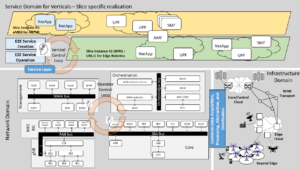Roundtables about uses cases and network slicing

Johannes Gutenberg invented the movable metal-type printing process, Benjamin Franklin invented the lightning rod, and DABUS invented a beverage container. While the first two claims are widely accepted, the third claim has been the cause of a fundamental controversy on who can be an inventor. That is because DABUS is not a human being, but an artificial intelligence machine. And in conventional thinking, a machine cannot be an inventor, only a tool used by a human inventor.
According to the Wikipedia entry for “Inventor”, the matter is clear: “An inventor is a person who creates or discovers new methods, means, or devices for performing a task.” Ryan Abbott, a law professor at University of Surrey, has been challenging this common notion since 2013. He rejects that only a person can be an inventor and claims that an AI machine could be an inventor as well. “We’re moving into a new paradigm where not only do people invent, people build artificial intelligence that can invent,” said Abbott, who authored in 2020 a book with the title “The Reasonable Robot: Artificial Intelligence and the Law.”
The Artificial Intelligence Project
According to Abbott, corporations are unwilling to push the issue of AI inventions, if it means not being able to obtain legal protection for their products. Thus, he set up the Artificial Intelligence Project [1] and teamed up with Stephen Thaler, founder of Imagination Engines Inc., to build a machine whose main purpose is to invent. The result was DABUS, an AI machine that “invented” not only the aforementioned beverage container, but also a device for attracting enhanced attention. Abbott and a group of volunteering lawyers filed patent applications for these inventions in 17 jurisdictions listing DABUS as the inventor.

© Adobe Stock
Unsuccessful patent applications
The quest of Abbott and his team to put man and machine on an equal footing under international patent law has been overwhelmingly met by a negative response from patent offices all over the world. As of November 2021, the patent application is pending in 11 countries. In the US, Europe, Germany, the UK, and Australia, the patent application has been rejected, and appeals are pending.
The European Patent Office (EPO) and the UK Intellectual Property Office (UKIPO), for example, came to similar conclusions: they denied the patent applications on the grounds that an AI system cannot be listed as an inventor. The European Patent Convention and the UK Patents Act, which were the basis for the respective decisions, both require an inventor to be a named person. The same requirement is valid under the U.S. Patent Act.
The first patent for an AI machine
Despite the rejection by almost all patent offices, Abbott and his team finally had reason to celebrate a victory in July 2021: The Companies and Intellectual Property Commission (CIPC), an agency of the South African Department of Trade and Industry, granted a patent to the applicant Stephen L. Thaler and the inventor DABUS for a “Food Container and Devices and Methods for Attracting Enhanced Attention“, with the note: “The invention was autonomously generated by an artificial intelligence” [2]. That has made South Africa the first, and, so far, the only country to grant a patent to an AI inventor. One of the reasons for this result could be that the term “inventor” is not defined in South African patent law.
The distinction between owner
and inventor
In patent law, there is the distinction between the owner of an invention and the inventor. Depending on the jurisdiction in different countries, this distinction is important. The owner of the patent is usually the one who has the right to exploit it. Nonetheless, at least one name of an inventor has to be provided, otherwise the patent application gets rejected.
And this is exactly where current patent laws fall short, because Thaler did not invent the beverage container, it was DABUS, the AI machine he had built. If he had given his own name as inventor, more patent offices might have accepted his application.
Conclusion
The case of DABUS shows that current intellectual property and patent laws, which usually have been written decades ago, are getting increasingly out of sync with a fast-evolving technology landscape. The expected progress of artificial intelligence in all areas of life should sooner or later lead to a reconsideration of legal concepts regarding inventorship. Who knows, the next breakthrough invention may not be generated by an ingenious scientist of flesh and blood, but rather by an advanced AI machine.
References:
[1] Artificial Intelligence Project website – https://artificialinventor.com
[2] The patent for DABUS is registered in South Africa under the patent application number 2021/03242, application date: 13/05/2021, CIPC Patent Journal, July 2021, Vol 54, No. 07, Part II of II, 28 July 2021, page 255, URL: https://iponline.cipc.co.za/Publications/PublishedJournals/E_Journal_July%202021%20Part%202.pdf



